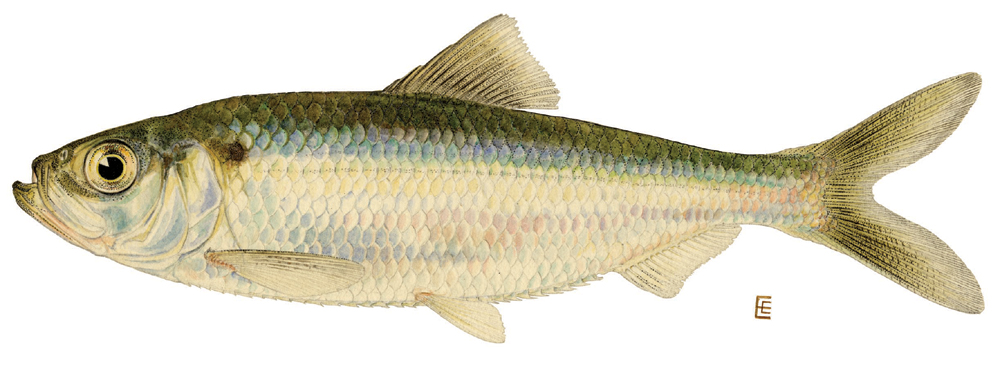The Environmental and Ecological Importance of Thiamine and Thiamine Deficiency in Aquatic Food Webs
Collaborators: Dale Honeyfield, USGS Northern Appalachian Research Lab; Esther Angert, Dept. of Microbiology, Cornell
 A large-scale and ongoing mortality of salmonine fishes from thiamine deficiency has been regularly observed in the Laurentian Great Lakes and Baltic Sea for the past 40 years, thereby presenting a substantial unsolved mystery. A series of studies have demonstrated that the thiamine deficiency observed in predatory salmonine fishes is caused by the presence of a thiaminase — an enzyme that degrades available thiamine — in their clupeid prey. Yet the source of and conditions responsible for the presence of consistently high thiaminase levels in clupeids and some other fishes remain poorly characterized. Although the primary hypotheses invoked to explain the presence of thiaminases within fish have focused on food web pathways leading to the accumulation of this enzyme, we are pursuing other perspectives to advance an understanding of this important problem in fisheries and aquatic ecosystem management.
A large-scale and ongoing mortality of salmonine fishes from thiamine deficiency has been regularly observed in the Laurentian Great Lakes and Baltic Sea for the past 40 years, thereby presenting a substantial unsolved mystery. A series of studies have demonstrated that the thiamine deficiency observed in predatory salmonine fishes is caused by the presence of a thiaminase — an enzyme that degrades available thiamine — in their clupeid prey. Yet the source of and conditions responsible for the presence of consistently high thiaminase levels in clupeids and some other fishes remain poorly characterized. Although the primary hypotheses invoked to explain the presence of thiaminases within fish have focused on food web pathways leading to the accumulation of this enzyme, we are pursuing other perspectives to advance an understanding of this important problem in fisheries and aquatic ecosystem management.
In my earlier work on this subject, conducted in collaboration with former graduate student Jesse Lepak and USGS Researcher Dale Honeyfield, we conducted laboratory experiments to evaluate the effect of two stressors on thiaminase activity in alewife, a clupeid fish that consistently has high thiaminase levels. More recently, my collaborators and I have been pursuing leads provided by recent discoveries in the realm of microbiology, molecular biology and structural chemistry that provide insights regarding the role of thiaminase in an ecological context. We are pursuing experiments with cultured organisms in an attempt to manipulate conditions considered responsible for inducing the production or accumulation of thiaminase in aquatic organisms and food webs. We are also exploring the role of this enzyme as a contributor to microbial pathogenicity.
For further information:
Lepak, J.M., C.E. Kraft, and M.J. Vanni. 2013. Clupeid response to stressors: the influence of environmental factors on thiaminase expression. Journal of Aquatic Animal Health 25:90-97. [Link to Full article]
Kraft, C.E., E.R. Gordon, and E.R. Angert. 2014. A rapid throughput method for assaying thiaminase I activity in diverse biological samples. Plos One 9(3):e92688 [Link to Full article]